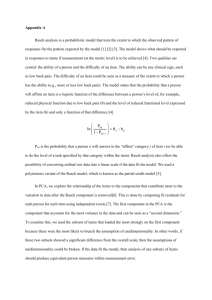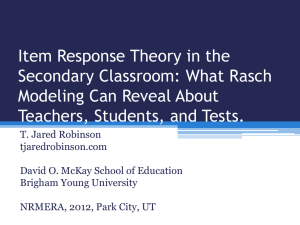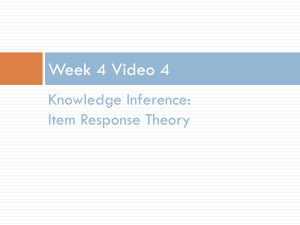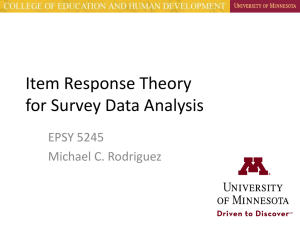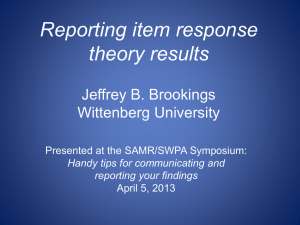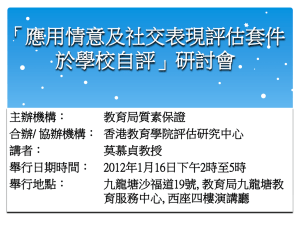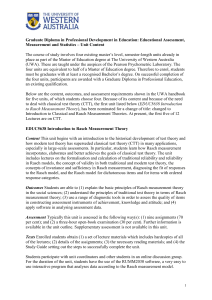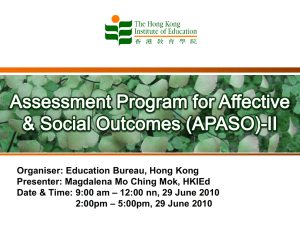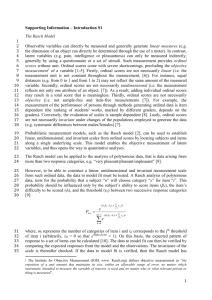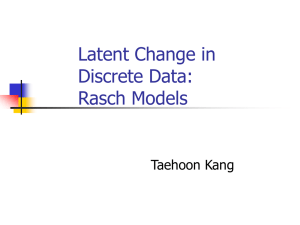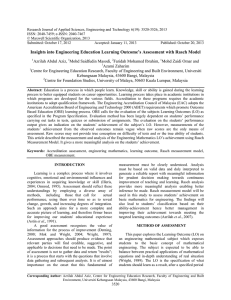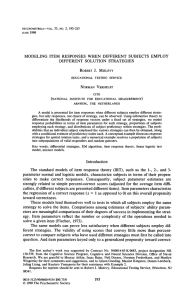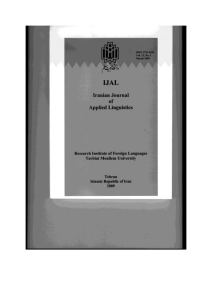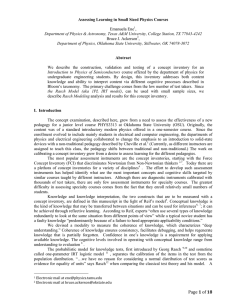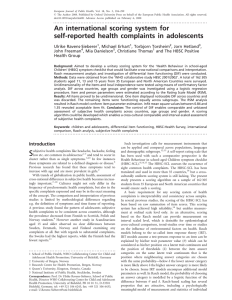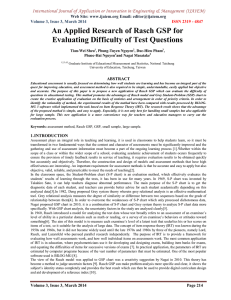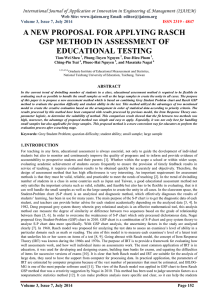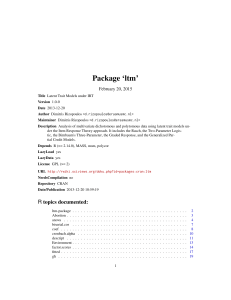NEERO 2016
advertisement
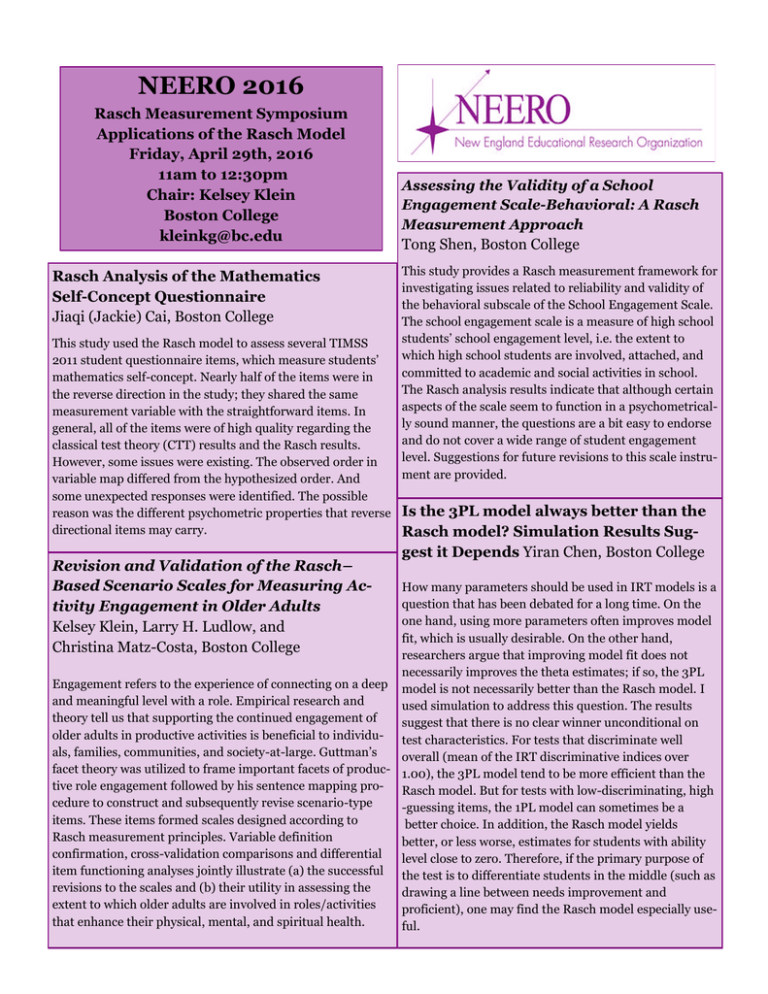
NEERO 2016 Rasch Measurement Symposium Applications of the Rasch Model Friday, April 29th, 2016 11am to 12:30pm Chair: Kelsey Klein Boston College kleinkg@bc.edu Rasch Analysis of the Mathematics Self-Concept Questionnaire Jiaqi (Jackie) Cai, Boston College This study used the Rasch model to assess several TIMSS 2011 student questionnaire items, which measure students’ mathematics self-concept. Nearly half of the items were in the reverse direction in the study; they shared the same measurement variable with the straightforward items. In general, all of the items were of high quality regarding the classical test theory (CTT) results and the Rasch results. However, some issues were existing. The observed order in variable map differed from the hypothesized order. And some unexpected responses were identified. The possible reason was the different psychometric properties that reverse directional items may carry. Revision and Validation of the Rasch– Based Scenario Scales for Measuring Activity Engagement in Older Adults Kelsey Klein, Larry H. Ludlow, and Christina Matz-Costa, Boston College Assessing the Validity of a School Engagement Scale-Behavioral: A Rasch Measurement Approach Tong Shen, Boston College This study provides a Rasch measurement framework for investigating issues related to reliability and validity of the behavioral subscale of the School Engagement Scale. The school engagement scale is a measure of high school students’ school engagement level, i.e. the extent to which high school students are involved, attached, and committed to academic and social activities in school. The Rasch analysis results indicate that although certain aspects of the scale seem to function in a psychometrically sound manner, the questions are a bit easy to endorse and do not cover a wide range of student engagement level. Suggestions for future revisions to this scale instrument are provided. Is the 3PL model always better than the Rasch model? Simulation Results Suggest it Depends Yiran Chen, Boston College How many parameters should be used in IRT models is a question that has been debated for a long time. On the one hand, using more parameters often improves model fit, which is usually desirable. On the other hand, researchers argue that improving model fit does not necessarily improves the theta estimates; if so, the 3PL Engagement refers to the experience of connecting on a deep model is not necessarily better than the Rasch model. I and meaningful level with a role. Empirical research and used simulation to address this question. The results theory tell us that supporting the continued engagement of suggest that there is no clear winner unconditional on older adults in productive activities is beneficial to individu- test characteristics. For tests that discriminate well als, families, communities, and society-at-large. Guttman’s overall (mean of the IRT discriminative indices over facet theory was utilized to frame important facets of produc- 1.00), the 3PL model tend to be more efficient than the tive role engagement followed by his sentence mapping pro- Rasch model. But for tests with low-discriminating, high cedure to construct and subsequently revise scenario-type -guessing items, the 1PL model can sometimes be a items. These items formed scales designed according to better choice. In addition, the Rasch model yields Rasch measurement principles. Variable definition better, or less worse, estimates for students with ability confirmation, cross-validation comparisons and differential level close to zero. Therefore, if the primary purpose of item functioning analyses jointly illustrate (a) the successful the test is to differentiate students in the middle (such as revisions to the scales and (b) their utility in assessing the drawing a line between needs improvement and extent to which older adults are involved in roles/activities proficient), one may find the Rasch model especially usethat enhance their physical, mental, and spiritual health. ful.
